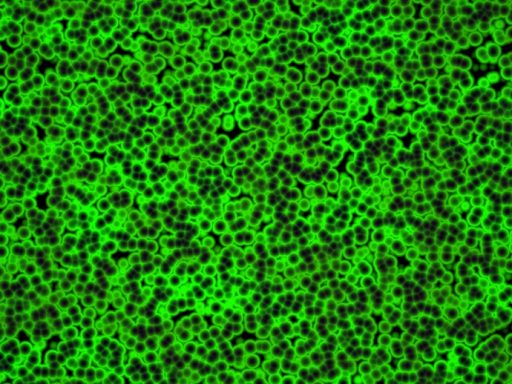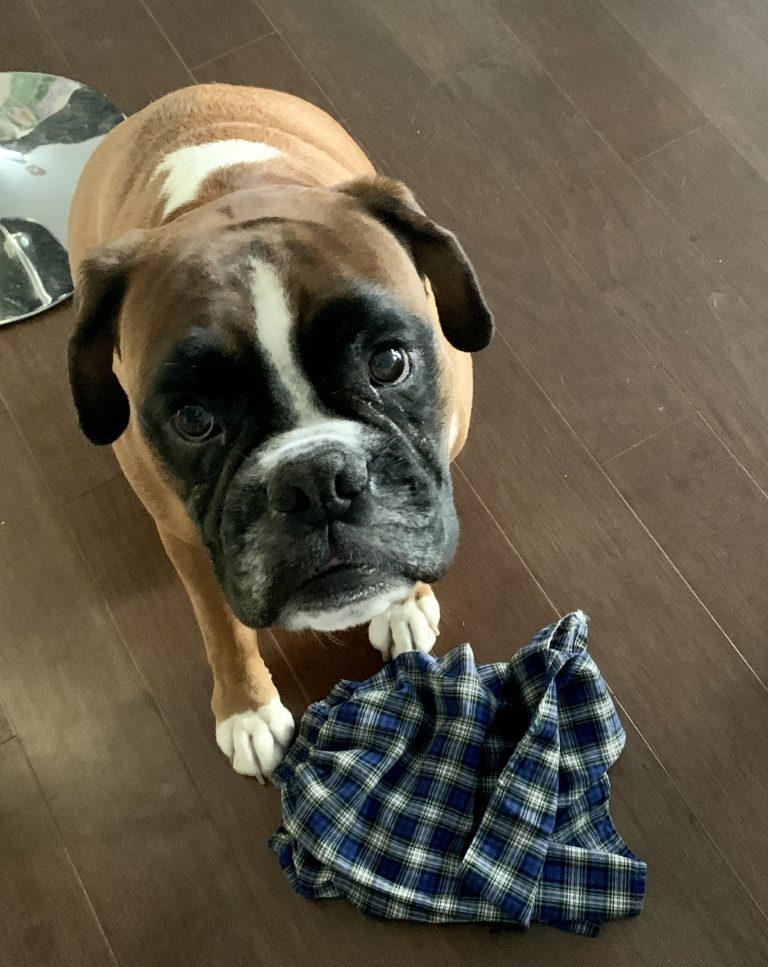EXPLORING NEW SCIENCE INNOVATIONS
New science innovations are a testament to human ingenuity. I’m a science fiction fan, but when future science concepts and ideas become the latest innovations to help our environment and ourselves, that is too good not to share!
This post is a celebration of human ingenuity. Armed with chocolate for me and salmon jerky for Louie, we looked at plethora of new technology and innovations in science. I could have chosen 100.
For now, Louie and I narrowed it down to a few science innovations with the potential to help the environment, mankind, and transform the future!
Let’s start with two innovations of science technology that convert the sweat on our skin into energy!
ENERGY CONVERSION TECHNOLOGY
Energy-autonomy! Imagine not needing to wait around to charge your earbuds!
Current wearable electronics like my ear pods have limited power density. Yes, I like that they’re rechargeable.
I don’t know about you but I forget to check mine regularly and end up frustrated when I’m ready to go but they aren’t.
How about breezing past potentially leaky, explosive, toxic, chemically polluting batteries in the store aisle! Fewer batteries in landfills sounds great to me.
We need to recycle batteries–no one wants lead, mercury, cadmium, manganese, lithium, zinc, nickel in our waters–but you get my point.
How about no more button batteries for young children or animals to accidentally ingest?
Sorry, Everready, I'm all in.
Two types of tech are racing to find a viable solution to this issue. (Technically, the researchers are working hard, not the tech!)
The first one uses passive fingertip sweat. Fingertip sweating sounds pretty random. How can that even be a new science innovation, you ask? I asked the same question…
PASSIVE PERSPIRATION BIOFUEL CELL
The device is a thin, flexible strip. A padding of carbon foam electrodes absorbs sweat and converts it into electrical energy. The electrodes are equipped with enzymes that trigger chemical reactions between the lactate and oxygen molecules in sweat to generate electricity.
What is the region of our bodies w/ the greatest sweat gland density?
Palms and soles of feet! (You probably could have guessed feet!)
As the wearer sweats or presses on the strip, the electrical energy gets stored in a small capacitor. You can use it as a mini battery and discharge the energy to small electronics as needed.
WEARABLE THERMOELECTRIC GENERATORS
Thermoelectric generators are small, wearable devices that directly convert low-grade heat to electricity.
Unlike the storage biofuel cell above that collects energy to use later as a charger, a thermoelectric generator powers your small electronics while you’re wearing it.
Okay, this is a narrow distinction. You are technically wearing the biofuel cell but it doesn’t charge a device while you wear it. It’s sucking your sweat for later.
RADIOISOTOPE THERMOELECTRIC GENERATORS (RTG)
I am presenting thermoelectric generators as future tech but technically, the tech is not new. (Tech three times in the same sentence. How annoying is that?)
This innovative technology is new as a wearable thermoelectric generator, but spacecraft are already wearing them!
On the right is a radioisotope thermoelectric generator courtesy NASA. (who else!)
Voyager I below from–you guessed it–NASA.
Let’s come back to Earth but stick with the 3D angle. We’ll do that by making sense of an innovative technology with mind-blowing applications.
3D printing is cool, but how about 3D printing living tissue!
3D BIOPRINTING (PRINTING LIVING TISSUE)
When I started my research with one of our kid’s school logins, my initial search found 30,684 articles about 3D printing.
WHAT? Not ‘what, you’re hacking school websites?'( I have permission…) ‘What,’ as in 3D printing is innovative technology extraordinaire.
3D printers now make shoes, furniture, tools, and toys. Clearly, I needed to narrow my search to new science innovations in 3D printing.
FIRST, WHAT IS 3D PRINTING?
BACK TO BIOPRINTING
Recent advances in the fields of engineering, biomaterials science, stem cell biology, physics, and medicine have combined their brilliant efforts to advance 3D bioprinting of living tissues!
Kidding aside, the applications for this innovative technology are endless!
TISSUE ENGINEERING
Solid organs — such as the liver, kidney, heart and pancreas — are especially challenging and are considered the “Holy Grail” of tissue engineering. I believe that future science such as 3D organ generation is within our grasp, thanks to science research.
Let’s switch gears (pun intended) and investigate another science innovation in physics!
SONIC FIRE EXTINGUISHER
That video below of flambeing scallops is making me hungry, but hopefully that chef has a fire extinguisher nearby.
If they do, have they checked it lately? Fire extinguishers are full of corrosive chemicals, have a discharge time of only 8-20 seconds, and make a huge mess.
Fire, its impact and relationship to mankind goes back to prehistory. There are many books and articles dedicated to this topic.
Fire is our best friend but also our worst enemy. (Take a look at the root cause of forest fires here)
Water fights fires because water eliminates the oxygen fire needs. Sound waves can do the same thing!
HOW?
So how could sound possibly put out a fire? It has to do with what sound is.
WHAT IS SOUND?
Is the speed of sound always the same?
NO!
FIGHTING FIRES WITH SOUND
The acoustic extinguisher works by using sound waves!
Remember that sound is a vibration pushing against our eardrum. (also good to remember when your kid is deciding on the middle school instrument)
This new science innovation pushes oxygen away from the source of a flame and spread it over a larger surface area.
Time to shrink it down. This emerging science innovation (don’t do a find for how many times I used the word ‘innovative) is microscopic, but geared globally.
LIVING CONCRETE
Speaking of mashups like bacteria and concrete, how about brain cells and computer chips?
ARTIFICIAL NEURONS
Designing artificial neurons that respond to electrical signals from the nervous system like real neurons has been a major goal in medicine for decades.
SILICON CHIP PLUS NEURONS
NEW SCIENCE INNOVATIONS OF 2021
New science innovations are a testament to human ingenuity. From generating electricity from our sweat to saving lives with sound to helping those with chronic illness have a better quality of life, the future is now, thanks to science!
Which one of these new science innovations strikes you the most? Let me know in comments! Hearing from you makes me happy!



























I’ve never heard of thermoelectric generators before but what a cool concept! I had no idea such a thing existed. Thanks for sharing such an interesting post 🙂
Thermoelectric generators are cool, I agree! You’re welcome! Thanks for stopping by.
I like the idea of neurons on chips. And organ printing sounds amazing. It’s like a book I read. We could extend life spans beyond the telomere limit you talked about in that other post. Thanks for this cool post.
I read a book like that too. The protagonist was a clone, being raised for his organs. House of the Scorpion, by Nancy Farmer. Anyway, I agree! Tissue engineering is cool. Thanks so much.
As you know, Flora has a monthly science subscription box but I’m glad to say, although I find the concept of putting out fires with sound, that’s not an experiment we’ve had to try yet! Science is amazing though, and posts like this prove it!
Flora is a lucky girl to have a mom who encourages her interest in science! I agree, putting out fires with sound is amazing tech. I hope we’ll see it on the shelves in this decade. Thanks, Lisa!
Some really cool innovations here! I love the idea of fighting fire with sound – that’s so fascinating! Thanks for sharing.
Louie agrees! I’m so happy that you found my post fascinating! Thank you.
Oooh this was so interesting! Thank you so much for sharing, I loved science at school and I do miss it!
No worries, you can catch up on science here! Thanks, Amie!
Wow honestly all these inventions are amazing! For most of them I had no idea they even existed. The only thing I was aware of was the 3D printing but I guess I knew it cause is a bit old.
Thank you for sharing all these information about such geat inventions!
I find them all amazing, too! You’re welcome. Thank you for stopping by!
These are great! As a Californian, I especially like the sonic fire extinguisher…
That makes perfect sense! Thanks, Jane!
I’ve seen the video with sound haha. It looks awesome and can be a future way of dealing with fire.
I hope that developers can find a way to make it work, too. Thanks.
Sonic fire extinguishers sound insane! So many interesting things in this post!
Corinne x
I’m glad you thought all these science advancements were interesting! Sonic fire extinguisher is in the lead for votes…
Thanks!
Very intereting post. Definitely we need the alternative way of producing energy.
Thanks for sharing..
Agreed! Thank you!
Interesting! I agree with Louie; putting out fires with sound is exactly what we need here in California!
Louie is very wise! Thank you!
I loved reading all about these new science innovations. Thanks so much for sharing!
I’m happy that you liked my post. Thanks so much!
Bacteria to heal cracks in concrete – that is SO cool! Thanks for all the research you do to keep us on top of the world of science!
A vote for living concrete! Hurrah! I’m grateful that you appreciate my research and compilations for these posts. Thank you!
This was so interesting to read! Thank you for sharing all about these new science innovations! Great post, as always! 🙂
You’re welcome. And thank you for stopping by!
The passive perspiration biofuel cell sounds interesting, but I wouldn’t have though you’d sweat much from your finger tips, as that would stop us holding stuff. But if tapping can generate powered, then I think most people could charge the world through just messaging on their phones alone
That would be cool, to tap our phones and charge our devices. Although people would need to put them on their thumbs, not pointer fingers! Maybe we can charge up the biofuel cells with our laptop keyboards instead. Thanks so much!
Such an interesting post! Loved reading all the cool innovations. We definitely need some of these right now!
We sure do! I am excited about all of them. (Obviously, or I wouldn’t have added them to a post!) Thanks, Jenny.
The sonic fire extinguisher sound amazing, like how can you use sound waves to put off fire without making noise? I love all the innovative technologies but this is insane.
They do make noise, actually. It’s a lower frequency, so a bass sound. (I better clarify in the post!) Thanks for asking about it and for stopping by!
The flashcards added to the layout is a great addition.
Thanks!
Love the post. One of your best. I especially like the 3-D printing to use as a template for Replacement tissue for burn victims etc. This would especially help someone improve their own self image. Great work. Keep it up! Mike
I’m with you on that! Self-image can’t be underestimated in that situation. And hopefully we’ll all have sonic extinguishers on hand as a preventative measure. Thanks so much.
I find it so fascinating what new science ideas are being tested. It makes me wonder just what innovations there will be in the next few years.
Exactly! I plan to stay on top of future science and emerging tech.(Be sure to subscribe!) Thanks.
All of these innovations are cool. I love the finger tips one. That’s pretty cool.
Typing and gathering energy! That is extremely cool. (With no poor hawks churned up in the wind blades, either.) Thanks!
All of these things are so amazing and mind boggling. It’s crazy amazing the thought of printing 3D tissue and how many people that could help medically!
Definitely mind-boggling. Even as researchers struggle towards the Holy Grail of tissue engineering of organs, they can achieve great strides with 3D printing less complex living tissues! Thanks.
These all sound so cool but the most interesting to me is 3D printing of living tissue. How amazing is that? Wow, science is just the best!
Science is the best. You’re making me smile, Heidi. Thanks.
3D Bioprinting just blows my mind! I remember hearing about it and I thought what an innovative idea because that would be amazing for so many people. So interesting to read more and I think passive perspiration Biofuel cell is mind blowing, amazing what science can do.
These science innovations blow my mind, too! I’m glad you found my post interesting. Thank you so much, Jordanne!
Science is truly amazing and the technology we have and do things we didn’t even think were possible. This was such an interesting article. Thank you so much for sharing.
Lauren
I couldn’t agree more! Science of today is the tech of tomorrow! Thanks.
These were extraordinary inventions wow! Thank you so much for sharing them, Sue! 😱 x Penny
I’m happy you found them extraordinary! Thanks, Penny.
Sue, these are so fascinating! Batteries powered by sweat and the ability to make living tissues blow my mind. Thanks for the information. Ever think about writing a story set in the future where you incorporate these?
Great idea, Amy! You’re so welcome. And thanks!
I think not my day today. I did hard-core technology. I suck at technology gadgets and everything to do with it so can’t add my critic today. But i did learn a few things if not much, and loved the bioprinting and fire extinguisher. Didn’t hear bioprinting before. Thanks for such a detailed post. Xx
Isa A. Blogger
https://bit.ly/39f9FN0
I love bioprinting and the sonic fire extinguisher too. Thanks for stopping by!
This is such a cool post! As a nurse, my favourite is the 3D printer and the ability (hopefully soon) to produce organs for those that require replacement. Great read and thanks for sharing.
I would love a way to produce organs for replacement too! I’m happy you found my post cool and a great read. Thanks so much, Jodie!
I’ve never heard of thermoelectric generators before but what a cool concept! I had no idea such a thing existed. Thanks for sharing such an interesting post
Thermoelectric generators are a cool concept, I agree. Thanks for stopping by!